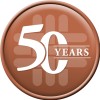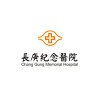
Jugular Venous Oxygen Saturation During Therapeutic Hypothermia After Cardiac Arrest
Hypoxic Brain InjuryHypothermiaThe purpose of this study is to understand what happens to cerebral metabolism during therapeutic hypothermia for hypoxic brain injury following cardiac arrest.

Neonatal Estimation Of Brain Damage Risk And Identification of Neuroprotectants
Brain DamageChronicNEOBRAIN brings together small and medium sized enterprises (SMEs), industry and academic groups devoted to the diagnosis, management, and neuroprotection in newborns with perinatal brain damage. The focus of NEOBRAIN is to identify strategies prevention of brain damage mainly observed in preterm newborns. (Copy from www.neobrain.eu)

Rate of Postpyloric Migration of Spiral Nasojejunal Tubes in Brain Injured Patients
Acute Brain InjuryThe success rate of unguided nasojejunal feeding tube insertion will be determined in acute brain injured patients. Factors influencing tube self-progression will be evaluated.

A Pilot Study to Identify Biomarkers Associated With Chronic Traumatic Brain Injury
Traumatic Brain InjuryThe aim of this research is to determine if the biological fluids (blood/saliva) from chronic brain-injured patients (both blast and non-penetrating TBI) contain reproducible protein markers. To accomplish this two populations of chronic TBI patients who are receiving treatment at The Institute for Research and Rehabilitation (TIRR): blast injury victims and non-penetrating TBI will be studied. Using multiple proteomic approaches including mass spectrometry, multiplex ELISAs, and antibody microarrays, as well as RNA profiling, the investigators aim to identify biomarkers in the blood/saliva of patients suffering from chronic TBI and to determine the similarities/differences between the blast and non-penetrating injury groups. Identification of these biochemical changes will give insight into the long-lasting changes associated with head injury, and may identify new targets for treating the associated pathologies.

PRISM Registry: Pseudobulbar Affect Registry Series
Alzheimer's DiseaseAmyotrophic Lateral Sclerosis (ALS)4 morePBA is a neurologic condition that is estimated to impact over a million patients and their families in the United States. PBA occurs secondary to an otherwise unrelated neurologic disease or injury, and manifests as involuntary, frequent, and disruptive outbursts of crying and/or laughing. Progress has been made in better understanding this debilitating condition, but much more needs to be done. That's why a new PBA patient registry, PRISM (Pseudobulbar Affect RegIstry Series), has been initiated. The goal of PRISM is to establish the prevalence and quality of life (QOL) impact of PBA in patients with underlying neurologic conditions including Alzheimer's disease Amyotrophic lateral sclerosis Multiple sclerosis Parkinson's disease Stroke Traumatic brain injury Because this is an observational registry, it doesn't require you to intervene with any specific treatment or procedure. Your participation allows the PRISM registry to collect and analyze data from your site and also compare it to national numbers captured in the PRISM registry about PBA across all of the major at-risk neurologic populations.

PC-Based Cognitive Rehabilitation for Traumatic Brain Injury (TBI)
Traumatic Brain InjuryThe investigators evaluated whether it was possible to improve the measurement of memory, attention, and executive function in patients who have suffered traumatic brain injury through the use of computer-based testing. Note: the original design of the study was altered due to failure to recruit sufficient numbers of patients who were willing to undergo prolonged cognitive training.

Expanded Access Protocol: Umbilical Cord Blood Infusions for Children With Brain Injuries
Cerebral PalsyHydrocephalus4 moreThe purpose of this protocol is to enable access to intravenous infusions of banked autologous (a person's own) or sibling umbilical cord blood (CB) for children with various brain disorders. This is an expanded access protocol intended for patients who are unable to participate in a clinical trial involving their own or their sibling's cord blood. Children with cerebral palsy, congenital hydrocephalus, apraxia, stroke, hypoxic brain injury and related conditions will be eligible if they have normal immune function and do not qualify for, have previously participated in, or are unable to participate in an active cell therapy clinical trial at Duke Medicine. For the purpose of this protocol the term children refers to patients less than 26 years of age. The cord blood is thawed and then administered as an intravenous infusion. Recipients do not receive chemotherapy or immunosuppression. The mechanism of action is through paracrine signaling of cord blood monocytes inducing endogenous cells to repair existing damage.

Use of Critical-Care Pain Observation Tool and Bispectral Index for Detection of Pain in Brain Injured...
Intensive CareBrain InjuriesBrain injured patients are at high risk of pain due to the illness itself and a variety of nociceptive procedures in intensive care unit. Since the disorder of consciousness, speech, and movement, it is usually difficult for them to self-report the presence of pain reliably. The Critical-Care Pain observation Tool (CPOT) has been recommended for clinical use in the critically ill patients when self-report pain is unavailable. Besides, it seems that the bispectral index (BIS), a quantified electroencephalogram instrument, can be used for pain assessment along with the CPOT tool in some nonverbal critical ill patients (e.g., intubated and deep sedation). However, the validity and reliability of CPOT and BIS for pain assessment in brain injured patients are still uncertain so far. So the aim of this research is to investigate the value of CPOT and BIS for pain evaluation in this specific patient group.

Is There a Worse Outcome When the Systolic Blood Pressure is Lower Than Heart Rate in Those Adult...
Traumatic Brain InjuryA systolic blood pressure (SBP) lower than the heart rate (HR) could indicate a poor condition in trauma patients. In such scenarios, the reversed shock index (RSI) is <1, as calculated by the SBP divided by the HR. This study aimed to clarify whether RSI could be used to identify high-risk adult patients with isolated traumatic brain injury (TBI).

Trends in Cohabitation Status, Academic Achievement and Socio-economic Indicators After Mild Traumatic...
Mild Traumatic Brain InjuryConcussion9 moreMild traumatic brain injury (mTBI) accounts for 70-90% of all diagnosed traumatic brain injuries (TBI) affecting approximately 50-300 per 100.000 individuals annually. Persistent post-concussion symptoms are reported in 15-80% of hospital admitted and outpatient treated populations, affecting labour market attachment, academic achievement, income, socio-economic status, social interactions, home management, leisure activities and cohabitation status. The association between mTBI and long-term trends in cohabitation status, income, academic achievement and socio-economic status has not been thoroughly explored. Previous studies focus on children's academic performance after severe TBI and only few studies include early adulthood and patients with mTBI. Trends in divorce rates are frequently conducted on severe injuries or populations consisting of veterans. Additionally, all studies have failed to apply a national register based design. Aim The aim of the study is to examine the long-term associations between mTBI and trends in cohabitation status, academic achievement and socio-economic status between pre-injury rates and observed rates at 5 years post-injury. The hypothesis was that by 5 years mTBI would be associated with increased odds of marital breakdown, decreasing academic achievement, decreasing income, decreasing socio-economic status compared to the general population in Denmark. Methods: The study is a national register based cohort study with 5 years follow-up of patients with mild traumatic brain injury from 2008 - 2012 in Denmark. Population: Patients between 18-60 years diagnosed with concussion (ICD-10 S06.0) were extracted from the Danish National Patient Register between (2003-2007). Patients with major neurological injuries and previous concussions at the index date and 5 years before the index date (1998-2007) were excluded. Patients who were not resident in Denmark 5 years before and during the inclusion period were also excluded (1998-2007). Data will be retrieved from several national databases, including: the Danish national patient register, Danish Civil Registration System (CRS), the Danish Education Registers, the Income Statistics Register and the Employment Classification Module (AKM). One control of the general population were matched for each case on sex, age and municipality. Outcome measures are: Cohabitation status, Education, income and socio-economic status.
